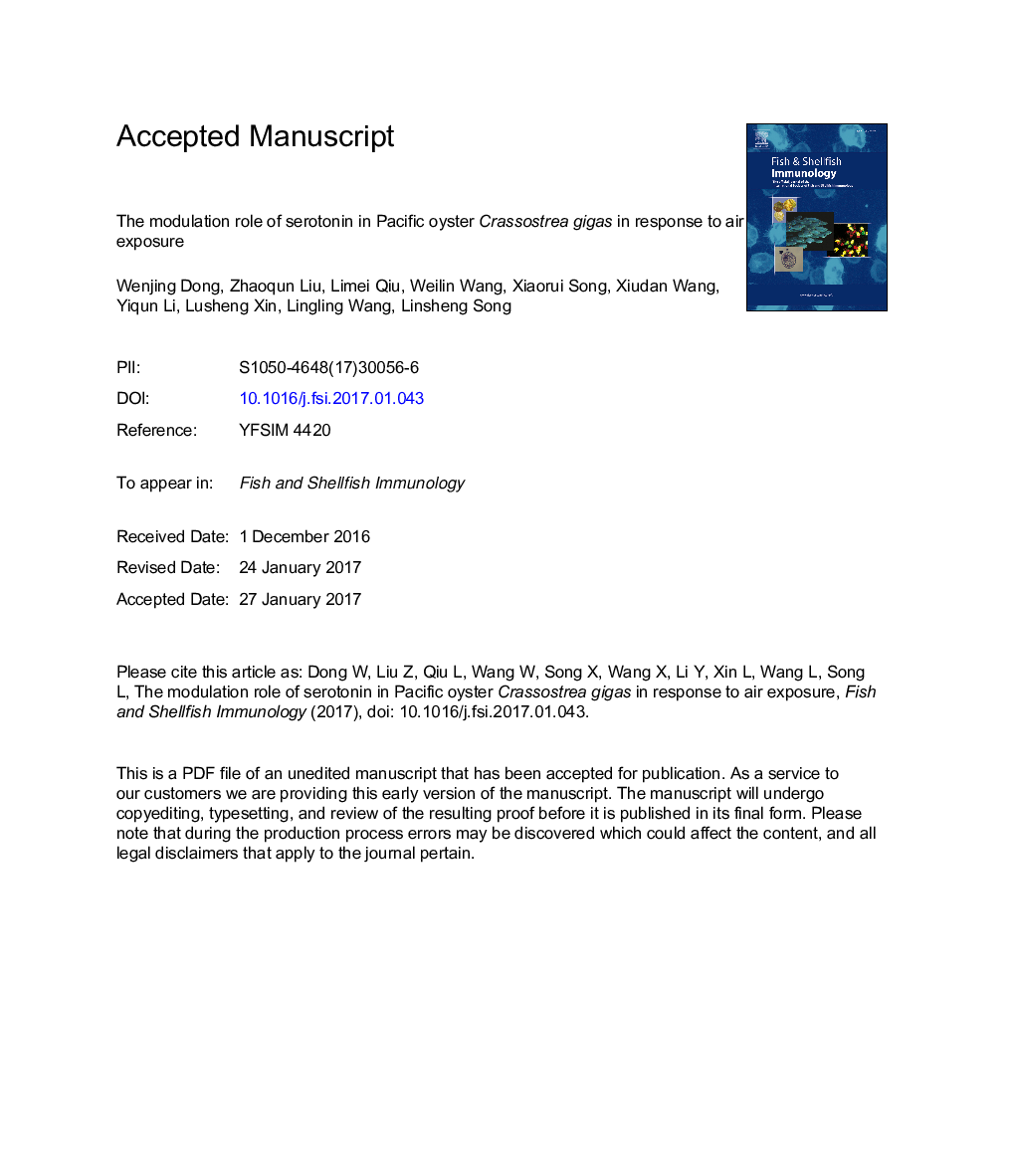| Article ID | Journal | Published Year | Pages | File Type |
|---|---|---|---|---|
| 5540577 | Fish & Shellfish Immunology | 2017 | 35 Pages |
Abstract
Serotonin, also known as 5-hydroxytryptamine (5-HT), is a critical neurotransmitter in the neuroendocrine-immune regulatory network and involved in regulation of the stress response in vertebrates and invertebrates. In the present study, serotonin was found to be widely distributed in the tissues of Pacific oyster Crassostrea gigas, including haemolymph, gonad, visceral ganglion, mantle, gill, labial palps and hepatopancreas, and its concentration increased significantly in haemolymph and mantle after the oysters were exposed to air for 1Â d. The apoptosis rate of haemocytes was significantly declined after the oysters received an injection of extra serotonin, while the activity of superoxide dismutase (SOD) in haemolymph increased significantly. After the stimulation of serotonin during air exposure, the apoptosis rate of oyster haemocytes and the concentration of H2O2 in haemolymph were significantly decreased, while the SOD activity was significantly elevated. Furthermore, the survival rate of oysters from 4th to 6th d after injection of serotonin was higher than that of FSSW group and air exposure group. The results clearly indicated that serotonin could modulate apoptotic effect and redox during air exposure to protect oysters from stress.
Related Topics
Life Sciences
Agricultural and Biological Sciences
Aquatic Science
Authors
Wenjing Dong, Zhaoqun Liu, Limei Qiu, Weilin Wang, Xiaorui Song, Xiudan Wang, Yiqun Li, Lusheng Xin, Lingling Wang, Linsheng Song,
